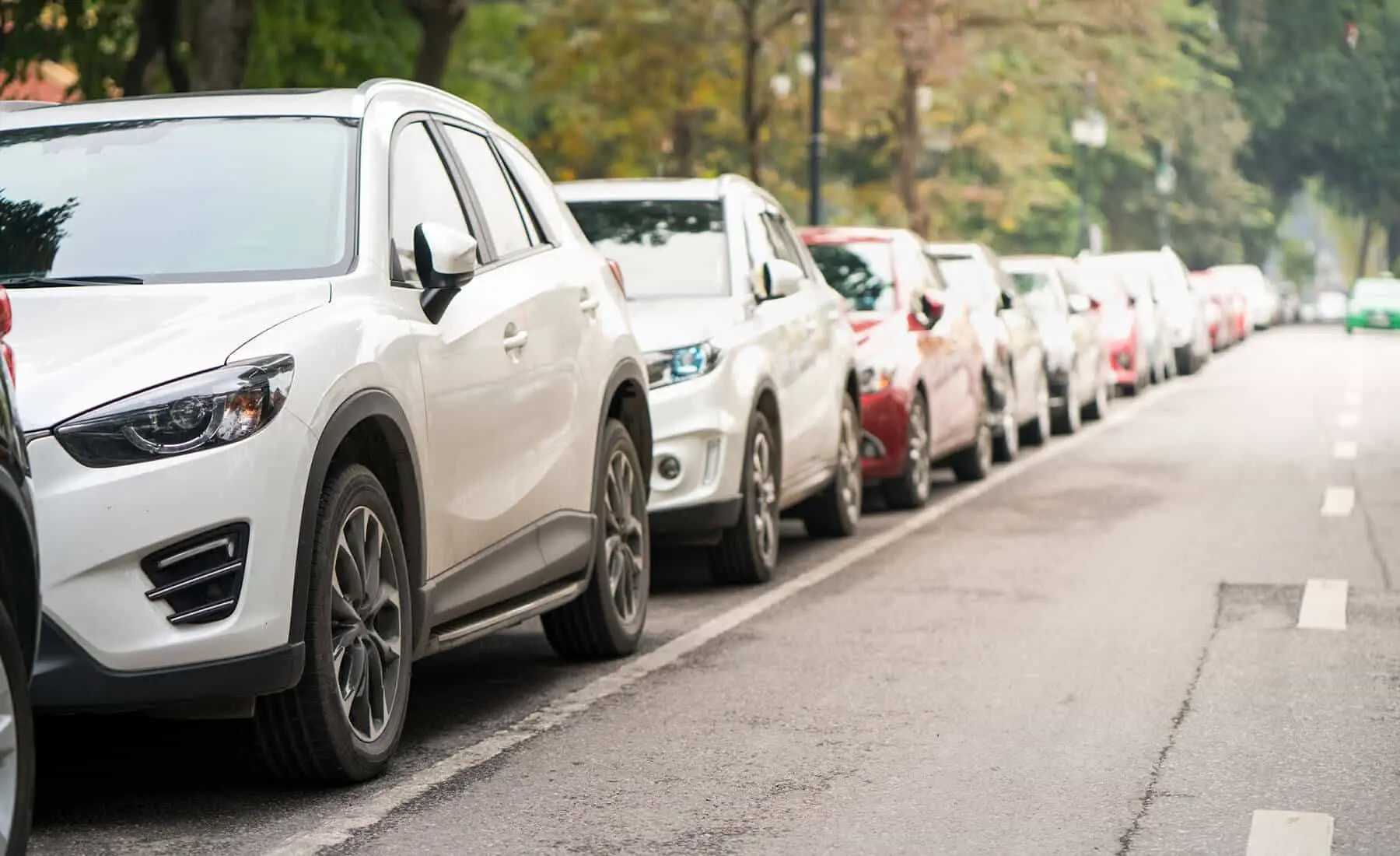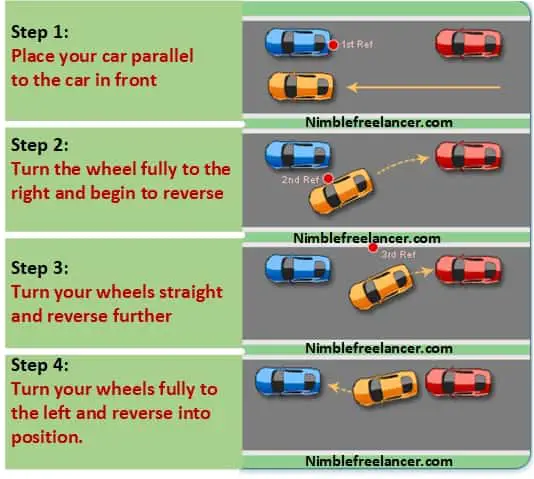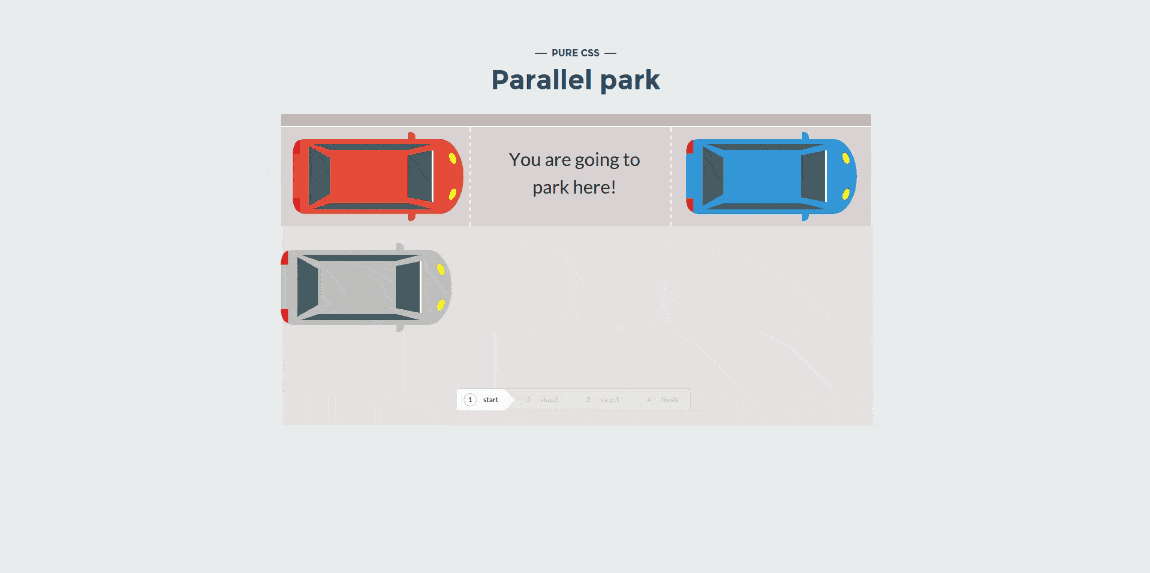Learning how to drive is just one step to begin your experience on the road. Apart from just learning to go, you need to understand some of the basics of your car, such as what to do when it is overheating or how to change a flat tire. In addition, you should also know especially about reversing your car in difficult situations and parking it in closed areas. This article will mainly address one of the most important and challenging things in driving. You all may have heard about the term parallel parking, which is touted as an essential technique or trick other than just simple parking.
Unfortunately, many experienced drivers are unaware of parallel parking their cars and avoid it. However, learning how to parallel park your car is nothing less than a blessing, and it helps you in some of the most challenging car rush spots. If you know how to parallel park, it saves up space and helps you get a parking spot faster than others.
So what is parallel parking, and what is an easy technique to learn how to parallel park your car like a pro? This article will talk about everything you need to understand about parallel parking.
What is parallel parking?
Parallel parking is a term used to describe a technique of parking where vehicles are parked parallel to the curb, with the front car bumper of each car facing the back bumper of the adjacent one.
Parallel parking is often seen in the parking lots of shopping centers and malls. It saves up space for many cars to park and is easier to get out from. Parallel parking is used because your vehicle is parked parallel to the road and next to other vehicles.

How to Teach Your Child to Parallel Park?
To teach your child or teenager to parallel park, you need to explain that the most critical step in setting up the car is about 20 inches parallel to the vehicle in front (see image below). Then, the driver needs to turn the wheel entirely to the parallel car side and reverse. Then, in step 3, the driver needs to turn the wheel straight and reverse further. After that, the driver must maneuver slowly and park the car as correctly as possible.

When parallel parking, you must not park more than 1 foot. Step 2 shows what is a 45-degree angle when parallel parking. If you parallel park your car well, you will see that the front passenger seat is parallel with the corner of the car’s rear of the front vehicle when you make a 45-degree angle.
Now we will try to explain how to park parallel to your car using this gif animation:

So, which side of the car is the right side?
Is the driver’s side right or left?
The driver’s side is left in most cars models worldwide. However, former British colonies, including Australia, South Africa, New Zealand, Malta, Cyprus, drive on the left side and usually use cars where the driver’s side is on the left.
The bulk of countries that drive on the left is former British colonies, including South Africa, Australia, and New Zealand. Only four countries in Europe still drive on the left, and they are all islands. People from the UK, the Republic of Ireland, Malta, Cyprus, British India (now India, Myanmar, Pakistan, and Bangladesh), British Malaya, Malaysia, Brunei, Singapore, and British Hong Kong drive on the left-hand side.
Is the passenger side the right side?
Yes, the passenger side is on the right side of the car, usually for most models. However, people from former British colonies drive on the left street side and usually drive car models where the passenger is on the left side.
Now when we now side let we analyze parallel parking in detail:
How to parallel park in detail?
Here are some of the steps which serve as a guideline to parallel parking your car.
- Parking Spot: The first step to parallel parking is understanding the right parking spot. This is meant to say that you should not attempt parallel parking in the first space that you see. Ideally, it would help if you waited to check which parking spot is a bit wide than your car, and it should have some length to it compared with your vehicle.
- MSMOG: The second step after finding the right parking spot is to remember the acronym MSMOG. This means the following:
M- Mirrors (Check the side mirrors thoroughly)
S- Signal (Turn on the indicator right or left, whichever is applicable to let the other drivers know that you will be parking here)
M- Mirrors (Check the side mirrors and the front one again)
O- Over the shoulder (You should look over your shoulders to have a thorough check again)
G- Go (After careful inspection, you should go to your reserved parking spot and take your vehicle). - Reverse Position: After careful inspection and approaching to go in the parking spot, you shout, put your car in the reverse position, and then slowly make way for reversing. Your body language should be upright, and you should face an angle of 90 degrees while changing the car. You should keep the signal on and wait after reaching the next car’s bumper. If another vehicle is coming from the side, they will know that you will park in this spot due to your right or left turn on signal. Therefore, it is essential to keep the indicator signal on.
- Curb heading: After the coast is clear, you should turn the steering wheel sharply to move your vehicle back. It should be done at an angle of 45 degrees, and you should let the car keep going until you can see the headlight of the other vehicle. It would help if you continued to let your vehicle go back until the car was safely inside the parking spot. You would see how the car is aligned with the other vehicles and has become parallel to the road at this point.
- Adjust your car: after your car has safely come inside the parking spot, you should be able to make some adjustments. For example, you can move the vehicle forward and then align it with straightening it and balancing the spaces from both sides. This is done so that the cars next to you can quickly move forward if they want to without putting a scratch on your vehicle. Usually, the vehicle’s distance from the cars next to it is twelve inches.
Why is reverse parking safer?
Reverse parking is not safer than ordinary parking because drivers have a smaller field of vision when reversing their vehicle. However, reverse parking is the only solution if you want to park in the limited space between two cars. Usually, for parallel parking between two vehicles, reverse parking is the only solution.
So, when reversing, which way turn the wheel? When you drive reverse you need to turn the wheel in the direction you want the car’s rear to go. So when you want to move away from the vehicle on your left and if you are reversing, you must turn the steering wheel towards that vehicle. It is the opposite of when you drive straight, and many beginner drivers are often confused.
What signal to use when parallel parking?
During parallel parking, use your turn signal. In this case, the turn signal of your car and your car position will indicate to the driver behind you that you are preparing to park.
Sometimes drivers can not guess someone else’s intention, and beginner drivers do not recognize that person in front of you try parallel parking. Therefore, it is best to turn the signal a few seconds before the parallel parking process begins.
When have you properly parked your vehicle in a straight?
You have a properly parked car if your vehicle is centered inside the space with no part of the car extending out into the traffic lane. Properly parked cars need to protect your vehicle and other vehicles from any damage.
Parallel Parking on Driving test
[table “72” not found /]As a driver, you can make a lot of mistakes. The parallel park is not one of them because usually, candidates do not fail on the most complicated tasks. However, sometimes, the most specific part of driving can be the biggest problem for candidates.
Is driving too close to parked cars a fail?
Yes, driving too close to parked cars can be a principal reason candidates fail. However, drivers need to predict a possible situation in an actual driving environment and avoid accidents.
Is hitting the curb an automatic fail?
Usually, hitting the curb is not an automatic fail. If you touch the curb a little bit after that readjust, you will not fail automatically. However, if you strike the curb or push the back wheel up over the curb, that situation will be an automatic fail on your driver’s test.
Is parallel parking on the driving test in NJ?
Yes, you must pass to parallel park and perform your 3-point turn as standard procedure in the NJ driving test. However, you do not need to do a perfectly parallel parking test because as long as you don’t hit a car or the curb too forcefully, you should still pass your parallel parking test.
Do you have to pass the parallel parking in Texas?
Yes, you need to pass to parallel park in the Texas driving test. However, you do not need to do a perfectly parallel parking test because as long as you don’t hit a car or the curb too forcefully, you should still pass your parallel parking test.
Why are people afraid of parallel parking?
Experienced and learned drivers are often seen avoiding parallel parking or not knowing about it. This is because it requires some techniques and specificities to park the car safely.
People are afraid of parallel parking because vehicles are pretty close to each other, and you need to be very specific in calculating how many turns you should make. Additionally, you need to reverse the steering wheel towards the parked vehicle, which can create anxiety and fear that your car and others’ vehicles may be damaged.
You should be aware of the surroundings and notice all of the four corners from the front mirror and side mirror and assess how much space is present for your vehicle to move in and out without wreaking any damage to the cars on both sides of your vehicle.
Although people learn parallel parking through repeated efforts, there is still a guideline that you should follow when attempting to parallel park. It is not quite tricky; however, practicing it makes it much easier for you to estimate the space and your calculations about moving your vehicle. You can practice in your own home first with something placed right next to the car. Usually, when you go to a driving license test, they also test you for parallel parking with cones placed next to the vehicle. So, therefore, it is an excellent practice to learn and attempt parallel parking at home before doing it in a shopping center or mall with many vehicles around your one.
Where can I practice parallel parking?
The best place to practice parallel parking is an empty parking lot or driver training grounds. Here you can put plastic cones or cardboard or simple draw parking lines and safely practice parallel parking.
When I was young, my father used to take me to an empty parking lot, and there, we practiced various parking skills. But, of course, the best places are driver training grounds where you can practice real driving situations and prepare for the driving exam if you didn’t get your license yet.
How far apart to set cones for parallel parking?
You need to set cones for parallel parking practice approximately fifteen feet apart to simulate the standard size of the vehicle on the parking lot.
Can you park your car on the road without insurance?
Yes, you can park your car on the road without insurance, but you will bear the costs yourself if any car damage happens. Usually, drivers have liability coverage (protects you as a driver if you cause damage to others) or collision coverage (covers your car if you hit another vehicle). However, if you like to park your car on the road, you should have comprehensive coverage to protect your vehicle from theft, vandalism, etc.
A few years I parked parallel to my car in front of my building. Kids played soccer very often, and a few times, they broke windshields and one-time rear door auto glass. It was an accident, but it was good that I had comprehensive coverage as excellent car insurance.
Conclusion
Parallel parking is not a very difficult thing to learn. Most drivers are aware of parallel parking by doing so and practicing. As with driving, you remember when you take the car practically on the road, and the same goes for parking as well. It would help if you were wary about your surroundings and especially pay attention to the vehicles and their sizes next to you. Apart from this, parallel parking can be achieved with just a few tricks and techniques and repeated attempts.
I hope you have easy and convenient parallel parking!
